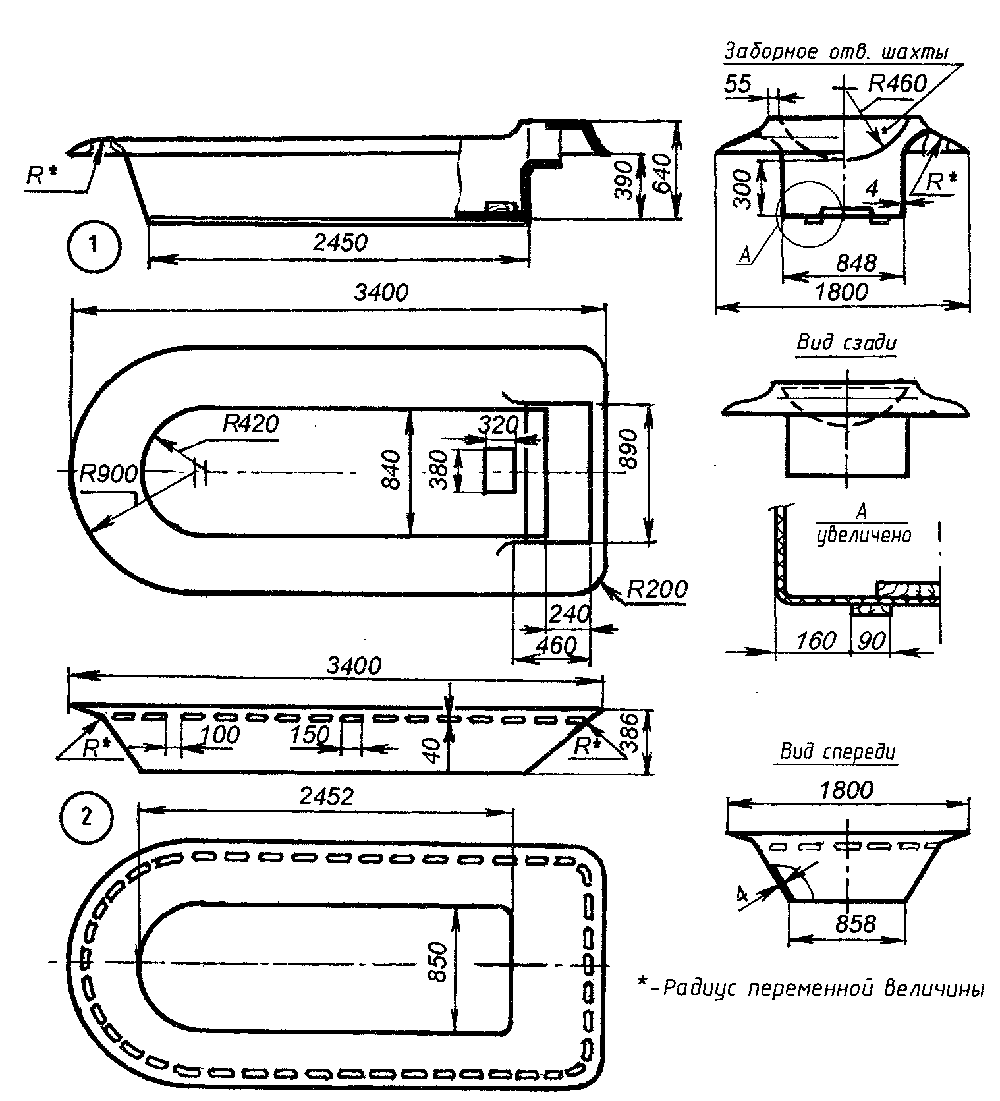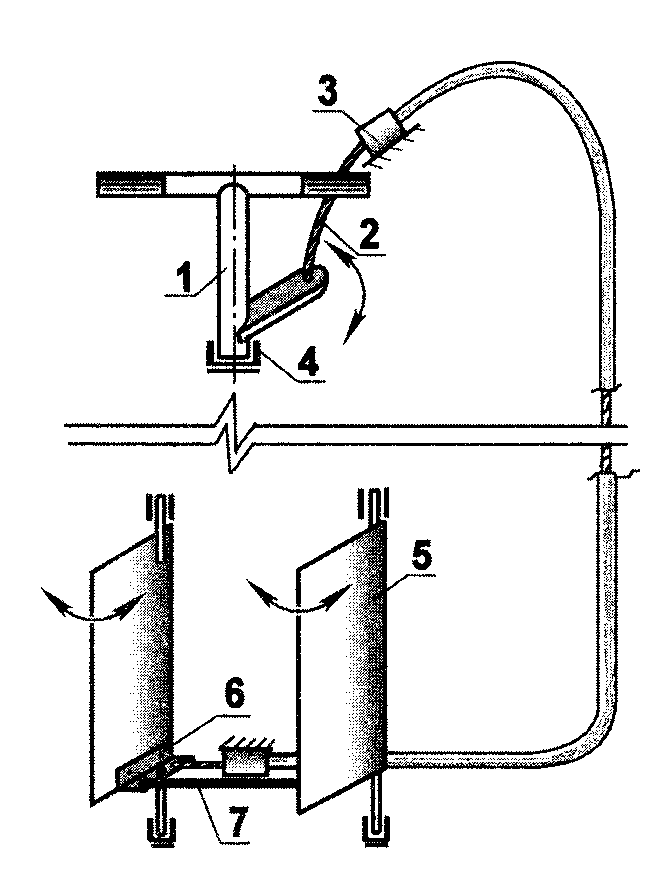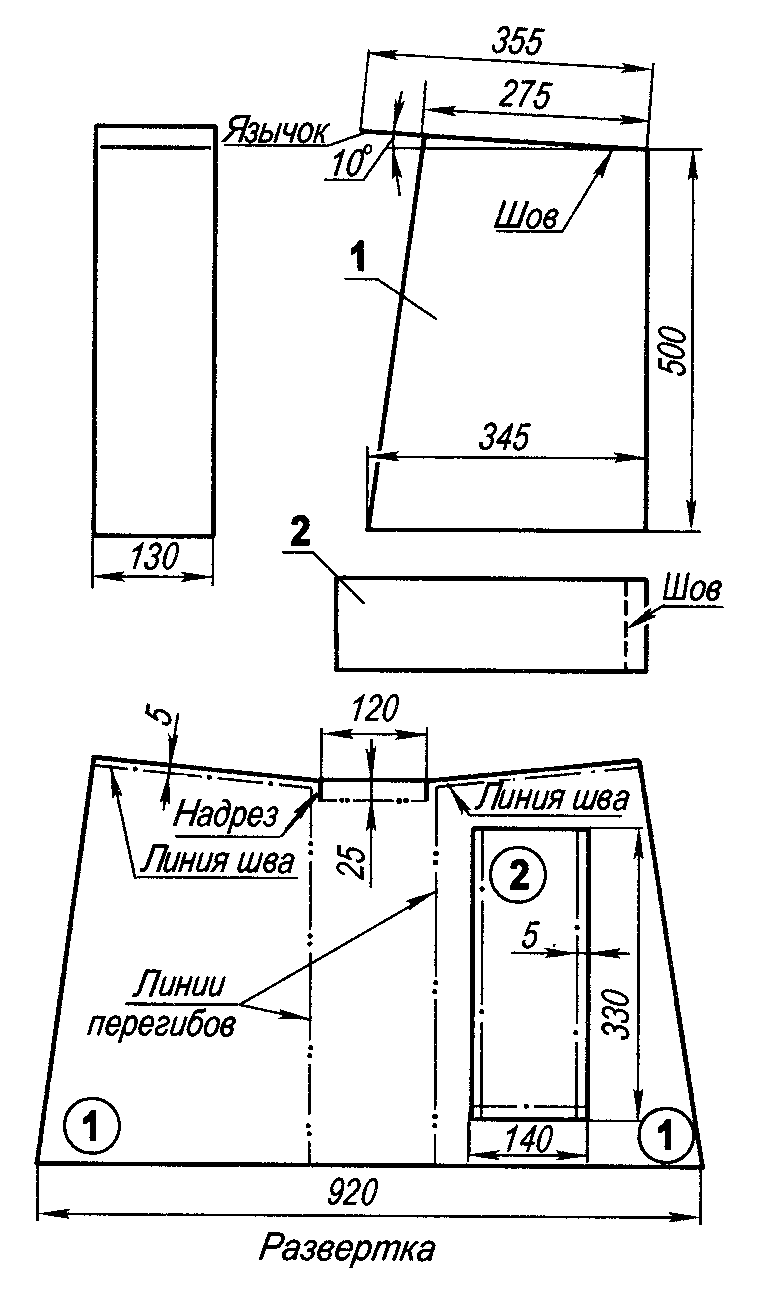Hovercraft "aerojeep"
The construction of a vehicle that would allow movement both on land and on water was preceded by an acquaintance with the history of the discovery and creation of original amphibious vehicles on air cushion(WUA), study of their basic structure, comparison of various designs and schemes.
To this end, I visited many Internet sites of enthusiasts and creators of WUAs (including foreign ones), and got acquainted with some of them in person. In the end, for the prototype of what was conceived boats() took the English "Hovercraft" ("soaring ship" - as the WUA is called in Great Britain), built and tested by local enthusiasts.
Our most interesting domestic machines of this type were mostly created for law enforcement agencies, and in recent years, for commercial purposes, had large dimensions, and therefore were not suitable for amateur manufacturing.
My device is on air cushion(I call it "Aerojip") - three-seater: the pilot and passengers are arranged in a T-shape, like on a tricycle: the pilot is in front in the middle, and the passengers are next to each other, next to each other.
The machine is single-engine, with a split air flow, for which a special panel is installed in its annular channel slightly below its center. The boat-AVP consists of three main parts: a propeller-driven installation with a transmission, a fiberglass hull and a "skirt" - a flexible enclosure of the lower part of the hull, so to speak, a "pillowcase" of an air cushion. Aerojip hull.
It is double: fiberglass, consists of an inner and an outer shell. The outer shell has a rather simple configuration - it is only inclined (about 50 ° to the horizontal) sides without a bottom, flat almost over the entire width and slightly curved in the upper part. The bow is rounded, and the rear looks like an inclined transom.
In the upper part, along the perimeter of the outer shell, oblong holes-grooves are cut, and at the bottom, outside, a cable covering the shell is fixed in eye-bolts for attaching the lower parts of the segments to it.
The configuration of the inner shell is more complicated than the outer one, since it has almost all the elements of a small vessel (say, a boat or a boat): sides, bottom, curved gunwales, a small deck in the bow (only the upper part of the transom is missing in the stern), while as one piece.
In addition, in the middle of the cockpit along it, a separately molded tunnel with a can under the driver's seat is glued to the bottom. It houses a fuel tank and a battery, as well as a "gas" cable and a rudder control cable. In the aft part of the inner shell, a kind of hut is arranged, raised and open in front.
It serves as the base of the annular channel for the propeller, and its deck is a bulkhead as an air flow divider, part of which (supporting flow) is directed into the shaft opening, and the other part to create a propulsive thrust force.
All elements of the case: the inner and outer shells, the tunnel and the annular channel, were glued on matrices made of glass mat with a thickness of about 2 mm on polyester resin. Of course, these resins are inferior to vinyl ester and epoxy resins in adhesion, filtration level, shrinkage, and the release of harmful substances during drying, but they have an undeniable price advantage - they are much cheaper, which is important.
For those who intend to use such resins, let me remind you that the room where the work is carried out must have good ventilation and a temperature of at least 22 ° C. The matrices were made in advance according to the master model from the same glass mats on the same polyester resin, only the thickness of their walls was larger and amounted to 7-8 mm (for the shells of the case, about 4 mm).
Before gluing the elements, all roughness and galls were carefully removed from the working surface of the matrix, and it was covered three times with wax diluted in turpentine and polished. After that, a thin layer (up to 0.5 mm) of gelcoat (colored varnish) of the selected yellow color was applied to the surface with a spray gun (or roller).
After it had dried, the process of gluing the shell began using the following technology. First, using a roller, the wax surface of the matrix and the side of the glass mat with smaller pores are coated with resin, and then the mat is placed on the matrix and rolled until the air is completely removed from under the layer (if necessary, you can make a small cut in the mat).
In the same way, the subsequent layers of glass mats are laid to the required thickness (4-5 mm), with the installation, where necessary, of embedded parts (metal and wood). Excessive flaps at the edges are cut off when gluing "wet". It is recommended to use 2-3 layers of glass mat for the manufacture of the sides of the hull, and up to 4 layers of the bottom.
In this case, it is necessary to glue in addition all the corners, as well as the screw-in points of the fasteners. After the resin has hardened, the shell is easily removed from the matrix and processed: the edges are turned, grooves are cut, holes are drilled. To ensure the unsinkability of the "Aerodzhip", pieces of foam plastic (for example, furniture) are glued to the inner shell, leaving only free channels for the passage of air along the entire perimeter.
The pieces of foam are glued together with resin, and are attached to the inner shell with strips of glass mat, also oiled with resin. After the outer and inner shells are made separately, they are docked, fastened with clamps and self-tapping screws, and then joined (glued) along the perimeter with strips of the same glass mat coated with polyester resin, 40-50 mm wide, from which the shells themselves were made.
After that, the body is left until the resin has completely polymerized. A day later, a duralumin strip with a section of 30x2 mm is attached to the upper junction of the shells along the perimeter with rivets, setting it vertically (the tongues of the segments are fixed on it). Wooden runners with dimensions of 1500x90x20 mm (length x width x height) are glued to the bottom of the bottom at a distance of 160 mm from the edge.
One layer of glass mat is glued on top of the runners. In the same way, only from the inside of the shell, in the aft part of the cockpit, is a base made of a wooden plate for the engine. It is worth noting that using the same technology as the outer and inner shells were made, smaller elements were also glued: the inner and outer shell of the diffuser, rudders, gas tank, engine casing, wind deflector, tunnel and driver's seat.
For those who are just starting to work with fiberglass, I recommend preparing the production boats precisely from these small elements. The total mass of the fiberglass body with diffuser and rudders is about 80 kg.
Of course, the manufacture of such a hull can also be entrusted to specialist firms that produce fiberglass boats and boats. Fortunately, there are many of them in Russia, and the costs will be commensurate. However, in the process of self-manufacturing, it will be possible to gain the necessary experience and the ability to further model and create various elements and structures from fiberglass. Propeller-driven installation.
It includes an engine, a propeller and a transmission that transfers torque from the first to the second. The engine is used by BRIGGS & STATTION, produced in Japan under an American license: 2-cylinder, V-shaped, four-stroke, 31 hp. at 3600 rpm. Its guaranteed service life is 600 thousand hours.
Starting is carried out by an electric starter, from the battery, and the work of the spark plugs is from a magneto. The engine is mounted on the bottom of the Aerojip body, and the propeller hub axis is fixed at both ends on brackets in the center of the diffuser raised above the body. The transmission of torque from the motor output shaft to the hub is carried out by a toothed belt. The driven and driving pulleys, like the belt, are toothed.
Although the mass of the engine is not so great (about 56 kg), its location on the bottom significantly lowers the center of gravity of the boat, which has a positive effect on the stability and maneuverability of the vehicle, especially this one - "aeronautical".
Exhaust gas is led out into the lower air stream. Instead of the established Japanese one, you can also use suitable domestic engines, for example, from snowmobiles "Buran", "Lynx" and others. By the way, engines with a capacity of about 22 liters are quite suitable for a one- or two-seater WUA. with.
The propeller is six-bladed, with a fixed pitch (set on land by the angle of attack) of the blades. The annular channel of the propeller should also be attributed to an integral part of the propeller-driven installation, although its base (lower sector) is made integral with the inner shell of the body.
The annular channel, like the body, is also composite, glued from the outer and inner shells. Just in the place where its lower sector joins the upper one, a fiberglass dividing panel is arranged: it divides the air flow created by the propeller (and, on the contrary, connects the walls of the lower sector along a chord).
The engine, located at the transom in the cockpit (behind the back of the passengers' seat), is closed from above with a fiberglass hood, and the propeller, in addition to the diffuser, is also a wire grille in front. Soft elastic "Aerodjip" guard (skirt) consists of separate, but identical segments, cut and sewn from dense lightweight fabric.
It is desirable that the fabric is water-repellent, does not harden in the cold and does not allow air to pass through. I used Finnish Vinyplan material, but a domestic fabric such as percale is quite suitable. The pattern of the segment is simple, and you can even sew it manually. Each segment is attached to the body as follows.
The tongue is thrown over the side vertical strip, with an overlap of 1.5 cm; on it is the tongue of the adjacent segment, and both of them, in the place of the overlap, are fixed on the bar with a special clip of the "crocodile" type, only without teeth. And so along the entire perimeter of the "Aerodzhip". For reliability, you can also put a clip in the middle of the tongue.
The two lower corners of the segment with the help of nylon clamps are suspended freely on a cable that wraps around the lower part of the outer shell of the body. Such a composite skirt design makes it possible to replace a failed segment without any problems, which will take 5-10 minutes. To the point it will be said that the structure turns out to be operational in case of failure of up to 7% of the segments. In total, they can be placed on a skirt up to 60 pieces.
The principle of movement of "Aerojip" is as follows. After starting the engine and idling, the machine remains in place. As the number of revolutions increases, the propeller begins to drive a more powerful air flow. Part of it (large) creates propulsive force and propels the boat forward.
The other part of the flow goes under the dividing panel into the side air ducts of the body (free space between the shells to the very nose), and then through the holes-grooves in the outer shell evenly enters the segments.
This flow, simultaneously with the start of movement, creates an air cushion under the bottom, raising the vehicle above the underlying surface (whether it be soil, snow or water) by several centimeters. Rotation of the "Aerojip" is carried out by two rudders, deflecting the "forward" air flow to the side.
The rudders are controlled from a motorcycle-type double-arm steering column, through a Bowden cable running along the starboard side between the shells to one of the rudders. Another rudder is connected to the first rigid rod. On the left handle of the two-armed lever, the carburetor throttle control lever is also fixed (analogue of the throttle handle).
For operation hovercraft it must be registered with the local state small craft inspectorate (GIMS) and receive a ship ticket. To obtain a certificate for the right to drive a boat, you must also pass a training course on how to operate a small boat. However, even on these courses, there are still far from everywhere instructors for piloting hovercraft.
Therefore, each pilot has to master the management of the WUA independently, literally bit by bit, gaining the appropriate experience.
Hovercraft "Aerojip": 1-segment (dense fabric); 2-mooring cleat (3 pcs.); 3-wind visor; 4-side segment fastening strip; 5-handle (2 pcs.); 6-propeller guard; 7-ring channel; 8-rudder (2 pcs.); 9-rudder control lever; 10-door access to the gas tank and battery; 11-seat of the pilot; 12-passenger sofa; 13-engine casing; 14-engine; 15-outer shell; 16-filler (foam); 17-inner shell; 18-split panel; 19-propeller; 20-propeller hub; 21-drive toothed belt; 22-knot for fixing the lower part of the segment

Theoretical drawing of the body: 1 - inner shell; 2-outer sheath

The transmission diagram of the propeller-driven installation: 1 - the output shaft of the engine; 2-drive toothed pulley; 3 - toothed belt; 4-driven toothed pulley; 5 - nut; 6-distance sleeves; 7-bearing; 8-axis; 9-hub; 10-bearing; 11-distance sleeve; 12-support; 13-propeller

Steering column: 1-handle; 2-arm lever; 3-rack; 4-bipod (see photo)

Steering diagram: 1-steering column; 2-Bowden cable, 3-unit for attaching the braid to the body (2 pcs.); 4-bearing (5 pcs.); 5-steering panel (2 pcs.); 6-arm arm-bracket (2 pcs.); 7-tie rod steering panels (see photo)

Flexible fencing segment: 1 - walls; 2-cover with tongue
